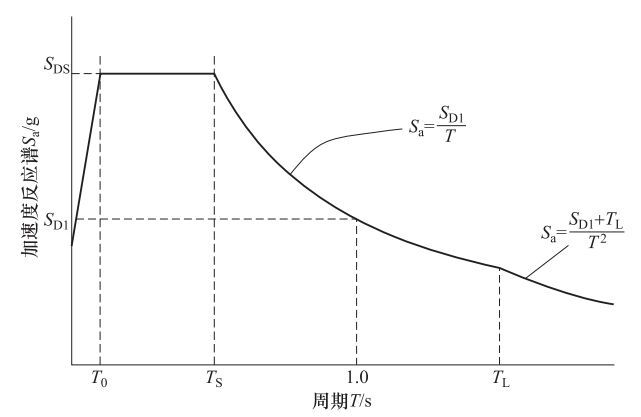Building Anti-seismic Design Regulations in the United States and Its Approach to Ground Motion Design
-
摘要: 本文论述了美国建筑抗震设计法规体系发展演变过程及其代表性的规范、标准与技术文档;分析了美国当前建筑法规中设计地震动参数的重要技术见解,设计地震动的不同层次与作用,基于目标风险的最大考虑地震概念等技术的进展,同时,也总结了美国抗震设计相关法规中设计地震动确定的基本规定。本文旨在从美国庞大复杂的建筑设计法规体系中,梳理出清晰的建筑抗震设计的法规体系脉络与设计地震动的要求,为我国建筑抗震设计中设计地震动的相关研究提供参照。Abstract: In this paper, we introduced the evaluation of building seismic design regulation, and some typical codes, standards and documents of the United States.We also discussed and analyzed the new insights into design ground motion parameters, different levels design ground motion connected with difference design performance, the concept of Risk-targeted Maximum Consider Earthquake, and all that technical developments in the US building codes and standards.Then, the provisions about seismic design ground motion are summarized.The purpose of this paper is clearly to reveal the relation of regulatory requirements on building seismic design in the United States from complex system including building codes, consensus standards and the usage of seismic design ground motion. The research work in this paper will be helpful for the seismic design ground motion in China.
-
Key words:
- Building seismic design /
- Seismic design ground motion /
- Model code /
- Consensus standard /
- NEHRP Provisions /
- ASCE 7 /
- MCER
-
图 1 NEHRP Provisions 2009设计反应谱(FEMA,2009)
Figure 1. Design response spectrum of NEHRP Provisions 2009(FEMA, 2009)
表 1 场地调整系数Fa(FEMA,2009)
Table 1. Site coefficient, Fa (FEMA, 2009)
场地类别 短周期段加速度反应谱值参数 SS≤0.25 SS=0.5 SS=0.75 SS=1.0 SS≥1.25 A 0.8 0.8 0.8 0.8 0.8 B 1.0 1.0 1.0 1.0 1.0 C 1.2 1.2 1.1 1.0 1.0 D 1.6 1.4 1.2 1.1 1.0 E 2.5 1.7 1.2 0.9 0.9 F 开展场地反应分析确定 表 2 场地调整系数Fv(FEMA,2009)
Table 2. Site coefficient, Fv (FEMA, 2009)
场地类别 短周期段加速度反应谱值参数 SS≤0.25 SS=0.5 SS=0.75 SS=1.0 SS≥1.25 A 0.8 0.8 0.8 0.8 0.8 B 1.0 1.0 1.0 1.0 1.0 C 1.7 1.6 1.5 1.4 1.3 D 2.4 2.0 1.8 1.6 1.5 E 3.5 3.2 2.8 2.4 2.4 F 开展场地反应分析确定 -
卫明, 2001a.美国的建筑标准与规范(上).建筑, (9):43-44. http://www.cnki.com.cn/Article/CJFDTOTAL-JANZ200109018.htm 卫明, 2001b.美国的建筑标准与规范(下).建筑, (10):43-45. http://www.cnki.com.cn/Article/CJFDTOTAL-JANZ200110022.htm ASCE, 2006. Minimum design loads for buildings and other structures, ASCE/SEI 7-05. Reston, Virginia:American Society of Civil Engineers. ASCE, 2010. Minimum design loads for buildings and other structures, ASCE/SEI 7-10. Reston, Virginia:American Society of Civil Engineers. ATC, 1978. Tentative provisions for the development of seismic regulations for buildings, ATC Publication ATC3-06, NBS Special Publication 510, NSF Publication 78-8. Washington, DC:Applied Technology Council, U.S. Government Printing Office. Beavers J. E., 2002. A review of seismic hazard description in US design codes and procedures. Progress in Structural Engineering and Materials, 4(1):46-63. doi: 10.1002/(ISSN)1528-2716 Diebold J., Moore K., Hale T., et al., 2008. SEAOC blue book:seismic design recommendations 1959 to 2008. In:The 14th World Conference on Earthquake Engineering. Beijing, China:Seismological Society of China. FEMA, 1998. NEHRP recommended provisions for seismic regulations for new buildings and other structures, part 1:provisions. FEMA 302/1997 Edition. Washington, DC:Federal EmergencyManagement Agency, Building Seismic Safety Council. FEMA, 2004. NEHRP recommended provisions for seismic regulations for new buildings and other structures, part 1:provisions. FEMA P-450-1/2003 Edition.Washington, DC:Federal EmergencyManagement Agency, Building Seismic Safety Council. FEMA, 2009. NEHRP recommended seismic provisions for new buildings and other structures. FEMA P-750/2009 Edition.Washington, DC:Federal EmergencyManagement Agency, Building Seismic Safety Council. FEMA, 2010. Earthquake-resistant design concepts:an introduction to the NEHRP recommended seismic provisions for new buildings and other structures.FEMA P-749. Washington, DC:Federal Emergency Management Agency, Building Seismic Safety Council. FEMA, 2015. NEHRP recommended seismic provisions for new buildings and other structures, volume I:part 1:provisions, part 2:commentary.FEMA P-1050-1/2015 Edition.Washington, DC:Federal EmergencyManagement Agency, Building Seismic Safety Council. Goupil J., 2013. ASCE 7 and the standards development process. Structure Magazine, 41. ICC, 2012. 2012 international building code. 4051 West Flossmoor Road, Country Club Hills, IL:International Code Council, Inc. Leyendecker E. V., PerkinsD. M., Algermissen S. T., et al., 1995. USGS spectral response maps and their relationship with seismic design forces in building codes, USGS Open-FileReport 95-596. U.S. Geological Survey. Luco N., Ellingwood B. R., Hamburger R. O., et al., 2007. Risk-targeted versus current seismic design maps for the conterminous United States. In:Proceedings of the SEAOC 76th Annual Convention. Sacramento, California:Structural Engineers Association of California. NFPA, 2009. NFPA 5000:building construction and safety code. Quincy, MA:NFPA, 1 Batterymarch Park. -




 下载:
下载:

